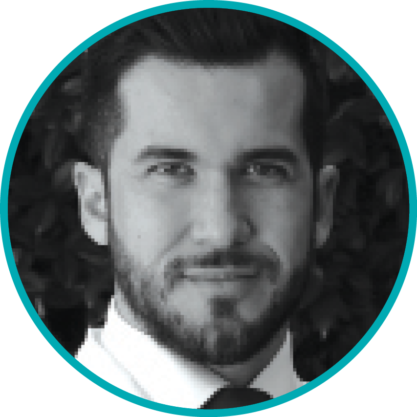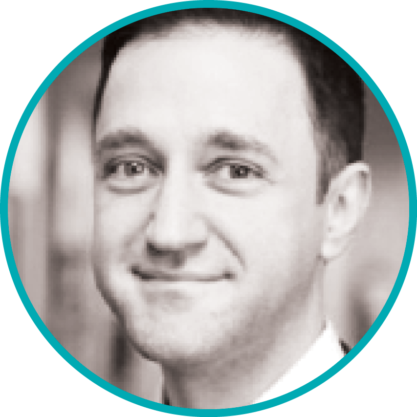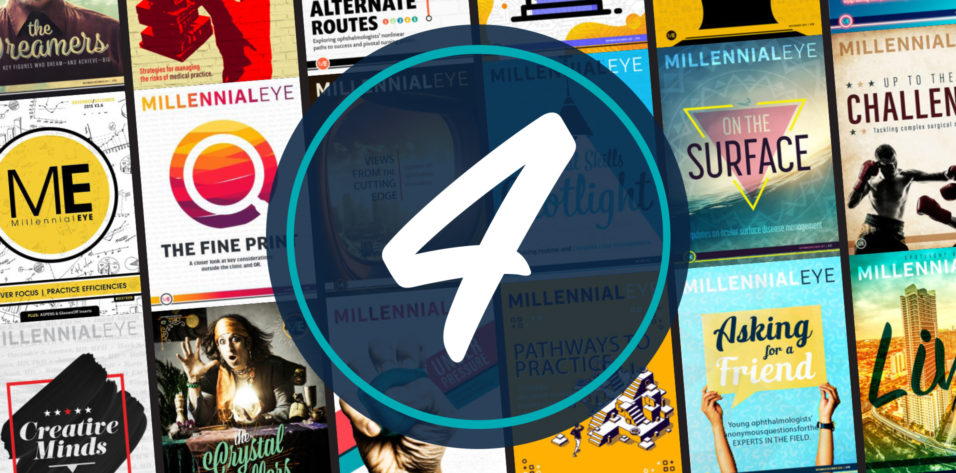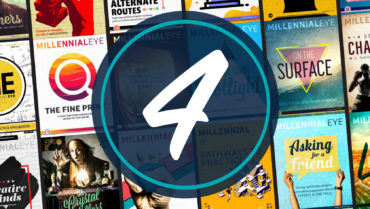1. MD & SM: 10 Hacks to Elevate Your Social Media Game | MillennialEYE March/April 2022

Dagny Zhu, MD
“Approximately 75% of patients search for health information online. This means that most are no longer asking their neighbors or friends for eye doctor recommendations; instead, they are consulting millions of strangers on the internet. Seeing as this trend will only continue to grow, ophthalmologists must meet patients where they are, and today that’s online—primarily on YouTube, Facebook, Instagram, and most recently TikTok.”
2. Making the Most of Social Media | MillennialEYE November/December 2019

Rupa Wong, MD
“In today’s digital world, many individuals—meaning our current and future patients—look online for information about their health. As health care providers, if we do not craft our own online narratives, then someone else will craft them for us, likely in the form of online reviews. I find that having a strong social media presence enables me to drown out some of this noise and, instead, take charge of the story being told about me and my practice. Beyond being used to create a professional narrative, social media can actually be used to boost it. I can confirm that my use of Instagram has directly led to patients coming into my office—but it is certainly not without a strategy.”
3. Machine Learning and AI in Ophthalmology | MillennialEYE January/February 2019

Ranya Habash, MD
“Technology has advanced dramatically in recent decades. The iPhone is 1 million times more powerful than all of the computers in NASA headquarters combined in 1985. That is just one example of how fast technology accelerates, and we can expect it to continue to advance at an accelerated rate in the years to come. According to the law of accelerating returns, more advanced societies advance at faster rates than less advanced societies because they are more advanced. Based on this logic, it is safe to assume that we are on the cusp of an explosion in technology, making this an exciting time to be in medicine.”
4. Big Data in Ophthalmology | MillennialEYE November/December 2019

C. Andrés Benatti, MD
“Ophthalmology is currently one of the specialties at the forefront of technology in medicine. Numerous members of our field are pioneers in the areas of big data, AI, machine learning, and deep learning, all of which will enable us to develop more efficient and sustainable medical practices today and in the future.”
5. Instagram for Ophthalmic Use: The New Grand Rounds | MillennialEYE September/October 2018

Nikola Ragusa, MD
“Admittedly, I only began using Instagram a few months ago as a way of presenting myself professionally. After searching around the platform and looking at other doctors’ accounts, I finally settled on how I wanted to use it. I began using social media, more specifically Instagram, as a venue to post photos of interesting and unique cases in my practice. The more cases I posted, the more I noticed my audience asking questions or wanting to know more about the content. In turn, I have found this to be a fun and engaging way of educating my peers and a great way to connect with doctors, residents, medical students, and occasionally even patients.”
6. Self-Sufficiency for People With Visual Disabilities: There’s an App for That | MillennialEYE November/December 2018

Cynthia Matossian, MD, FACS
“Tasks as basic as reading the instructions for an over-the-counter medication or deciphering directions in unfamiliar neighborhoods can be challenging for individuals with low vision. Fortunately, in many instances, technology can help. A variety of smartphone apps and devices are available to help people who have visual disabilities to more easily navigate their daily lives. Some of these apps and devices use smartphones or eyeglasses outfitted with cameras to connect users to volunteers or trained agents who can help troubleshoot computer problems, navigate previously unexplored environs, and more.”
7. Gaining Competence With New Technology | MillennialEYE May/June 2017

Michael Patterson, DO
“Ophthalmology has dramatically changed over the past decade. Anterior segment surgeons now have access to numerous topographers, aberrometers, premium IOLs, femtosecond lasers, microinvasive glaucoma surgery devices, and more. Generally, the ability to gain exposure to new technology is more readily available to surgeons in training than to surgeons who have been out in practice for decades. Additionally, large institutions have financial avenues to purchase newer equipment with larger capital than the solo private practitioner. The problem is that technology continues to change well beyond training, and it can be difficult for practicing ophthalmologists to get acquainted with new technology and the ever-expanding patient load coming into their practices.”
8. Virtual Consults: Communicating Visually With Patients | MillennialEYE May/June 2016

Giselle Ricur, MD
“The 21st century has been a time of substantial paradigm shifts, especially when it comes to the emerging uses of information and communication technologies (ICTs) in health care. ICTs have proven to be greatly valuable for addressing challenges faced by both developed and developing countries in providing accessible, cost-effective, and high-quality health care services. They have also redefined or created new practice styles or delivery models encompassed within the term telehealth that are proving to be beneficial for the patient community.”
9. Getting Started With #Ophthalmology | MillennialEYE November/December 2020

Edmund Tsui, MD
“Within the field of medicine, the use of social media has been steadily increasing, with more medical professional accounts popping up on Facebook, Instagram, Twitter, LinkedIn, and TikTok. The use of Twitter in particular has been widely adopted by physicians and trainees3 and has been especially active in the era of COVID-19.”
10. Clubhouse: Can I Ping You In? | MillennialEYE May/June 2021


Chris Cho, BA, and Brian Shafer, MD
“Social media platforms such as Twitter, Facebook, Instagram, and TikTok are used heavily by ophthalmologists. To name a few successful ophthalmologist users, Dr. Glaucomflecken (@DGlaucomflecken) has more than 258,000 followers on Twitter; Dagny Zhu, MD (@dzeyemd), has more than 53,600 followers on Instagram; Andrea Tooley, MD (@dr.andreatooley), has more than 49,000 followers on Instagram; and Brian Shafer, MD (@ShaferEyeMD), has more than 96,000 followers on TikTok. As these numbers continue to rise, the ability for ophthalmic leaders to reach a broad audience, including medical students, grows. Furthermore, because the COVID-19 pandemic precluded in-person residency interviews, many residency programs launched institution-specific Twitter and Instagram accounts to share information about their programs with prospective applicants.”




